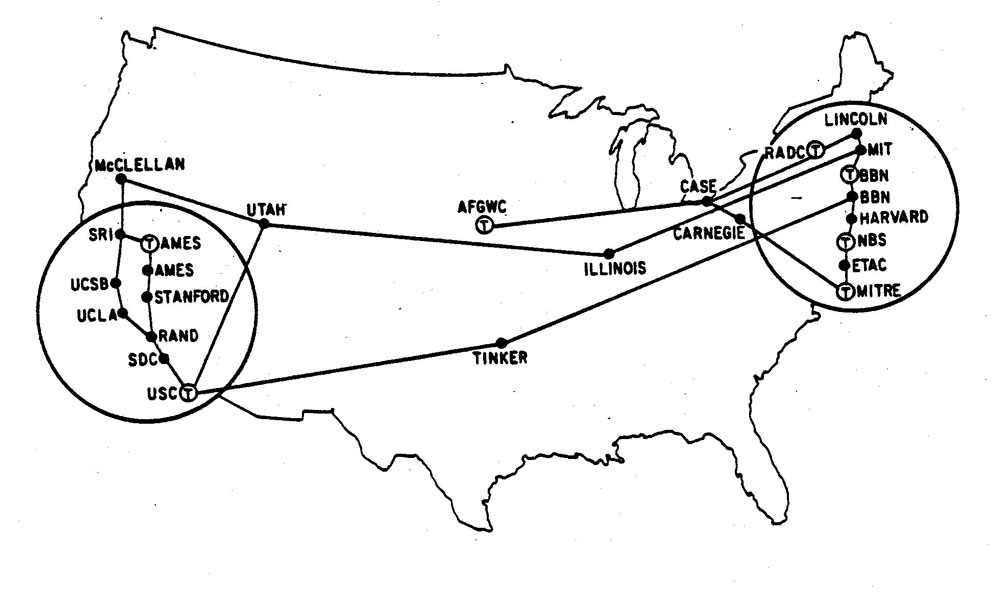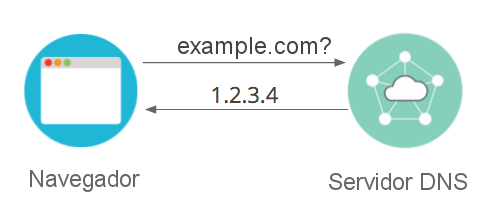
There is no doubt that the Internet has revolutionized the world of computing and communications as nothing has done before. A large part of our lives we develop in or thanks to the Internet, to such an extent that attacks like October 2016, a denial of service attack to a DNS provider (we will see what is later), lead to a real chaos Globalized
The Internet was born with an exclusively military purpose in the 60's, in the middle of the Cold War. The United States needed a decentralized communications network so that, in the event of an attack, the network remained operational and accessible from anywhere in the country, it was called ARPANET. At first this network had only four computers located in the main universities of the Southwest of the United States (UCLA, Stanford Research Institute, UCSB, and University of Utah).
It was in October 1969 that Charley Kline, a UCLA student, sent the first ARPANET packages while trying to connect with the Stanford Research Institute. In his message he sent the word login, although only the first two letters came (l and o) because the system collapsed. However, an hour later he tried again and this time successfully.

This primitive network was growing and was increasingly made up of more computers, but many of them used their own communication protocol, so they were not compatible with another. In this way a protocol that had already gained the acceptance of many, was standardized during the decade of 1980, the protocol TCP / IP, that like all protocol, establishes general guidelines to be able to establish an effective communication. Such was and is the potential of this protocol, which many said that this protocol would end up functioning between "two cans joined by a cord." There is even an IP implementation on messenger pigeons (IPoAC).
The Internet was becoming the best showcase, especially if you were a company dedicated to technology and innovation. Symbolics Computer Corporation, a Massachusetts computer company knew this, and in March 1985 registered symbolics.com, the world's first domain name; Which is still active today. But ... what is a domain name?
As we have said the communications are governed by the TPC / IP protocol. This in your network layer establishes that the devices connected to a network must have an associated address, that is, an IP address. The servers where the web pages are hosted, of course are devices connected to a network and therefore have their own IP address. If we wanted to access this same site, we would only have to write 104.18.48.71 in the browser, although for security reasons direct access by IP is not allowed. If we want to access Google 216.58.201.131, to Facebook 31.13.93.36 and so a long etcetera.
However remembering all those directions is not at all practical. A system was needed to associate these addresses with an easily rememberable string of text, thus the Domain Name System (DNS) was born. When we type steemit.com into the address bar, our computer will ask for the IP address associated with the DNS servers that it has configured. This offers quite a few advantages besides the ease of use it provides, and is that the IP address can change due to various reasons, but the domain name does not change. In addition, an address may be associated with several different domain names, but the IP address is unique to the device.

Domain names are grouped into several categories, at the top we have the top-level domains. Within these domains we find the generic top level (gTLD), such as .com .net or .org, designed to organize the resources offered by each domain by purpose. Subsequently they added geographic top-level domains (ccTLDs) as the .es for Spain. The organization in charge of the global management of these names is ICANN although it gives freedom to each country to administer its geographic superior level domains, in the case of Spain with the .es the entity in charge is the ESNIC.
It is common for people to try to do business with domain names, for example symbolics.com, the first registered domain, was sold to XF.com Investments in 2009 for an amount they did not want to reveal. Or LasVegas.com, which was sold for 90 million dollars, being the highest price ever paid for a domain.

Nice
Downvoting a post can decrease pending rewards and make it less visible. Common reasons:
Submit
Thank you..
Downvoting a post can decrease pending rewards and make it less visible. Common reasons:
Submit
Very interesting that it's still up. I read an article somewhere (maybe here??) about how things saved on the web generally don't last very long, which makes a nice use case for blockchain ;)
Downvoting a post can decrease pending rewards and make it less visible. Common reasons:
Submit
agree :) but I think now with social media, everything you upload to the web it's eternal..
Downvoting a post can decrease pending rewards and make it less visible. Common reasons:
Submit